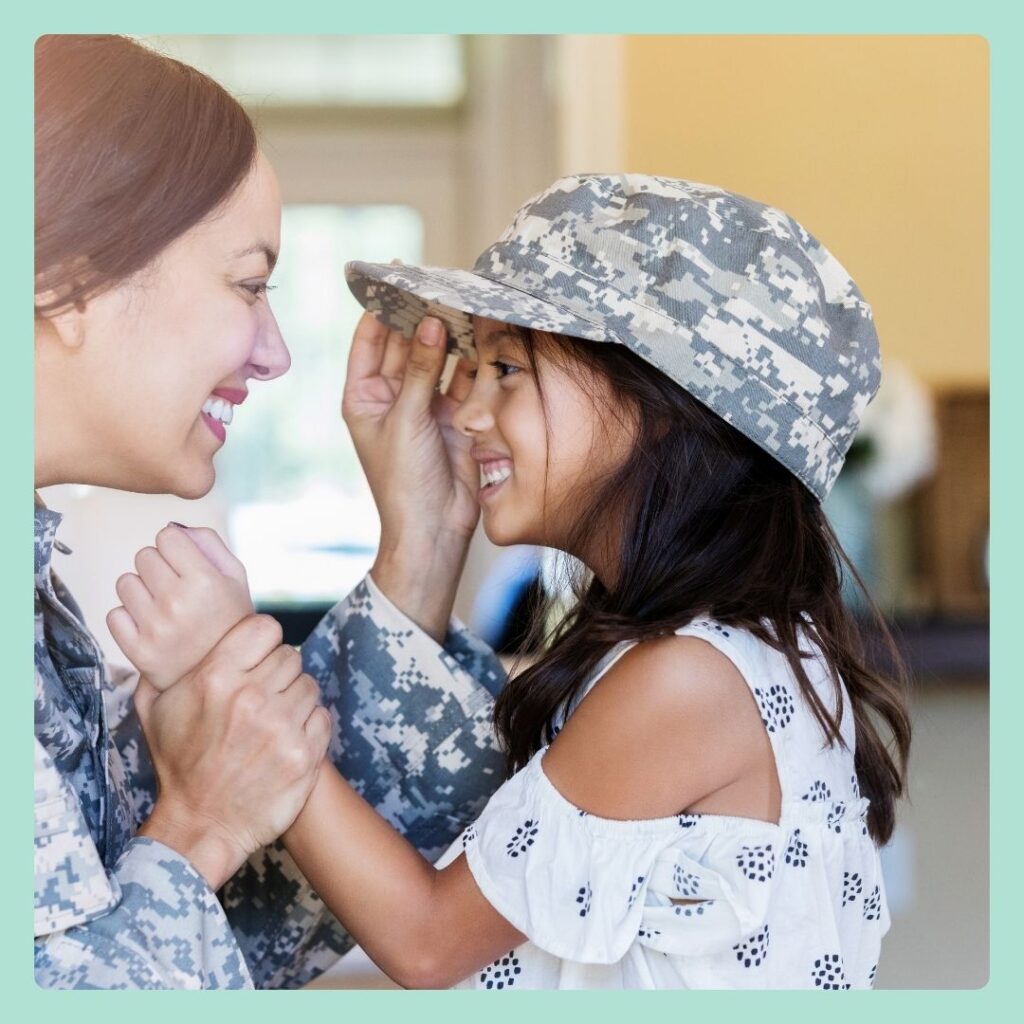If you’re a counselor in an area with a dense military population, you’re acutely aware of the ongoing military engagements around the world and the effects these long periods of parental absence have on students.
Sometimes, families move away from military installations to be closer to supportive extended family during deployments. In this case, some counselors may find themselves with military students on their caseloads for the first time ever. Whether you’re a regular at working with military students or new to the culture, we’ve got ideas for supporting military students during deployment so you can approach this sensitive time with confidence!

Supporting Military Students During Deployment
Understand the Cycle
While deployments can range anywhere from 6 to upwards of 18 months, the process of deployment begins long before the day the service member leaves. Prior to the deployment, service members may spend extended time away training for the deployment. This is commonly referred to as the pre-deployment phase. Then, of course, is the actual deployment, which is followed by the post-deployment, or reintegration phase.
Each phase can bring a wave of new emotions and difficult transitions for students. Keep lines of communication open with parents to stay informed about upcoming events so that you can check in with students. And remember that you may see changes even after the deployed parent returns as the family begins the reintegration process.
Educate Staff
Reduce Demands
As the student experiences each phase of the deployment, they can and will demonstrate a host of signs or behaviors. Help your staff understand what to look for and be sensitive to the student’s experiences. Encourage teachers to be cognizant of the demands placed on the student and reduce the workload if necessary. Some students may feel increased pressure to fill a role at home and may be unable to perform at the same level at which they were previously performing.
Be Mindful of Concerns about Safety
With talk of deployments or exposure to news media, some students may show increased signs of concerns about safety. Create a common language to state the policies or procedures in place in the school to address specific safety concerns. For example, “If there is a tornado warning, we will do XYZ to keep ourselves safe.”
Give Choices
Some military students may experience a heightened sense of loss of control before or during the deployment. When appropriate, encourage staff to give students choices to allow students to increase their control over appropriate classroom decisions.
Look for Emotional Reactions
Students may demonstrate a whole host of emotions such as anger, frustration, or constant worry during the deployment. Educate your staff on signs of these and encourage them to make referrals to the school counselor when the student is struggling to manage the emotions in the classroom setting. Help staff to understand that behavioral outbursts, social withdrawal, or disinterest may be signs that the student is struggling.
Specify Locations to Unwind
Set up specific areas where students can go to unwind. It may be a classroom calm corner or a specific room in your building where students can practice mindfulness. A district in Florida even set up a room where students could go to Skype with deployed parents. Whatever your area is, make sure students know where it is and encourage staff to let students use the area when they need a moment to manage their feelings.

Maintain Predictable Routines
Home life may feel chaotic in the initial weeks and months of deployment. Students will need the predictable routines afforded by the classroom. Students who did not previously need them may benefit from visual schedules.
If there are schedule or routine changes, let the student know ahead of time and privately, and be sensitive to his or her needs to ask questions about the changes. Be sensitive to outbursts relating to changes in routine, and allow the student to privately process with the counselor.
Build Community
If you have several students experiencing a deployment at the same time, consider forming a counseling group. Give students a space to discuss their shared experiences and create a supportive community. You can find books to read during your group on this post. Some students may also enjoy putting together care packages for the deployed family member.

If you have just one student going through a parental deployment, create another type of group to build connections or community. Some military students may even welcome the opportunity for a group that isn’t focused on the actual deployment. It could be a lunch group, game group, book club, or something else. Simply find a way for the student to have meaningful connections and supports within the school.
Provide an Outlet
Whether you’re meeting with the student individually or just checking in from time to time, give the student some sort of outlet for expression. A journal, an art pad, or play dough to channel energy into can help the student to express some of the feelings that may be hard to talk about.
Some students may also enjoy working on a long-term project with the counselor to take the focus away from the deployment. Work on a larger Lego project that can be gradually built over several weeks of meeting or work with the student to learn a new skill like finger knitting.
Finally, some students may be so tired of talking about the deployment at home that they just want to be a kid at school. Spend some time shooting basketball, playing board games, or some other fun activity to give them a break from thinking about the deployment!

Make Outside Referrals
If a student’s needs during the deployment require more extensive services, encourage families to seek outside therapy. Link families up with Military Family & Life Counselors for free counseling services or programs such as FOCUS Project for family resilience counseling before, during, and after the deployment. Get in touch with the military unit or School Liaison Officer. Communication with these entities creates an invaluable resource for getting families the services they need.
How are you supporting military students during deployment at your school? Let us know in the comments! For more information on supporting military students and resources available for families and providers, check out these sites:







